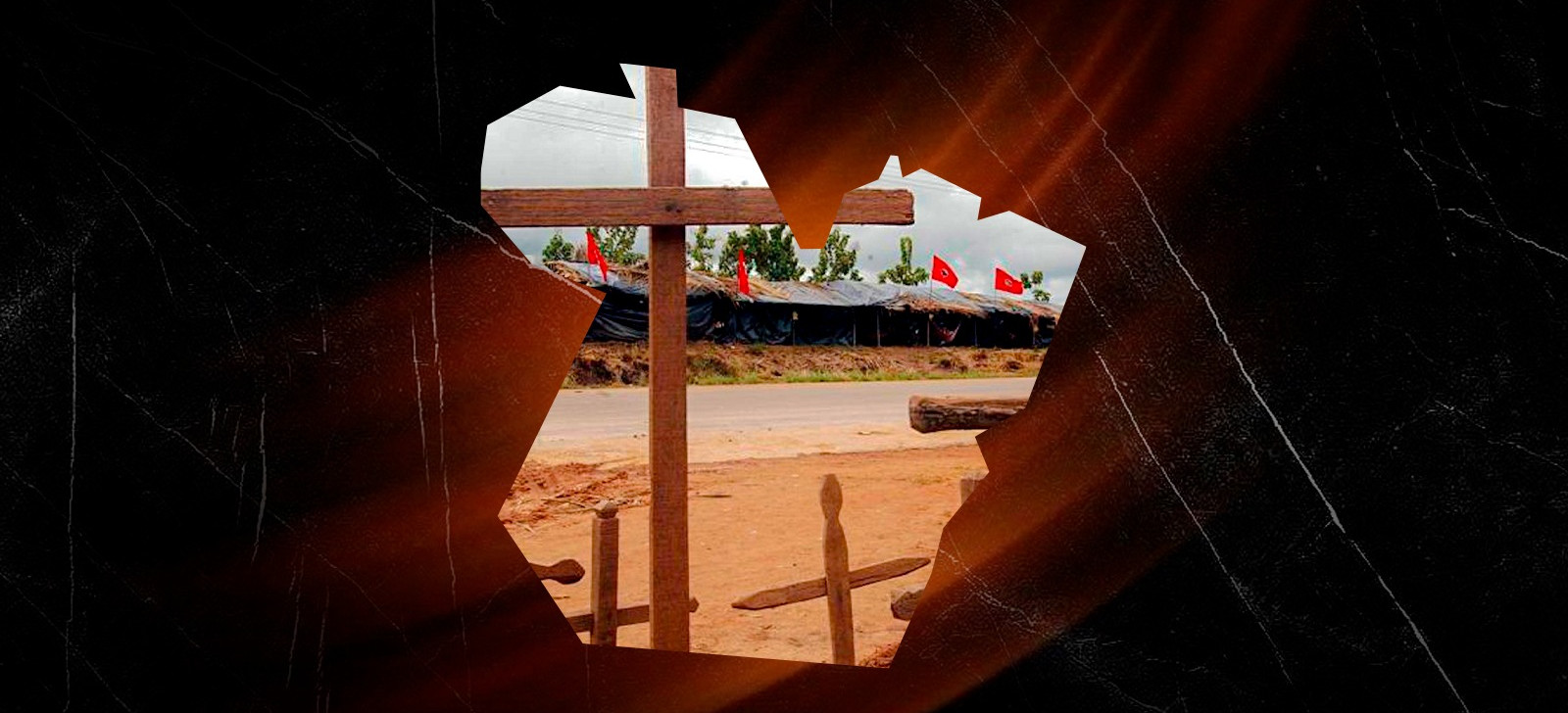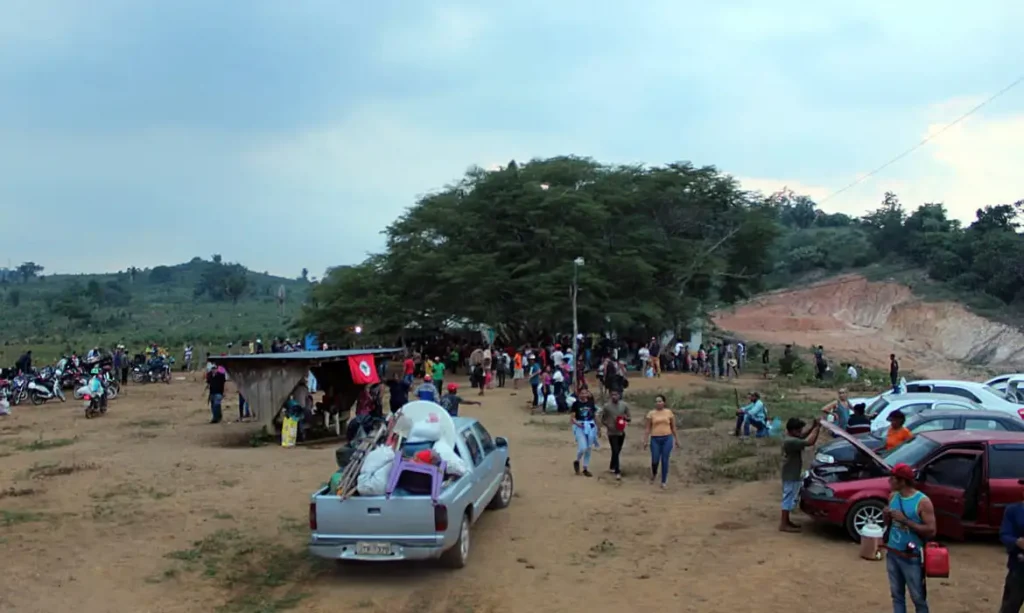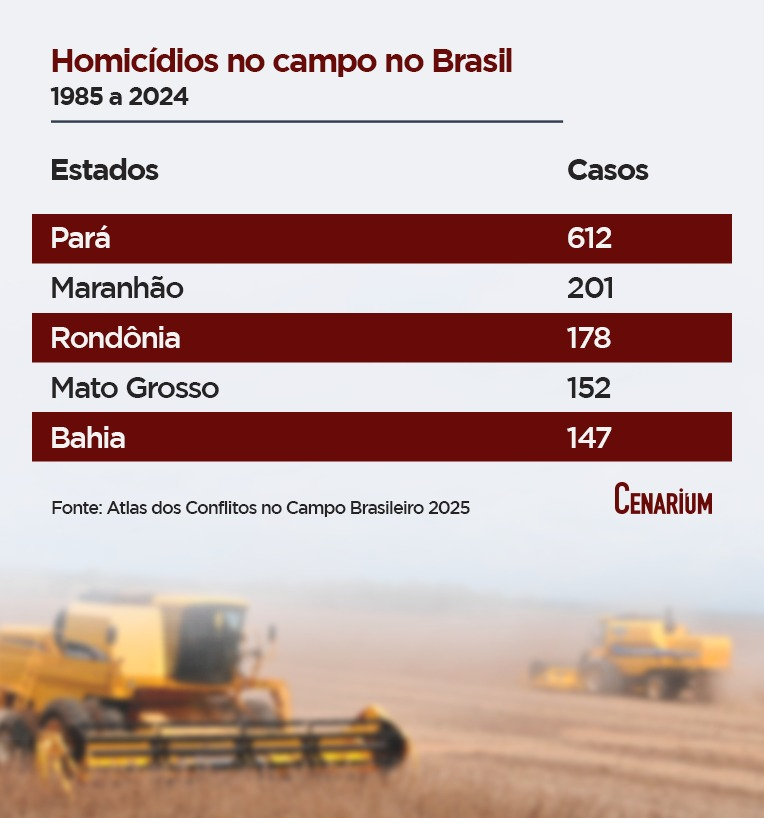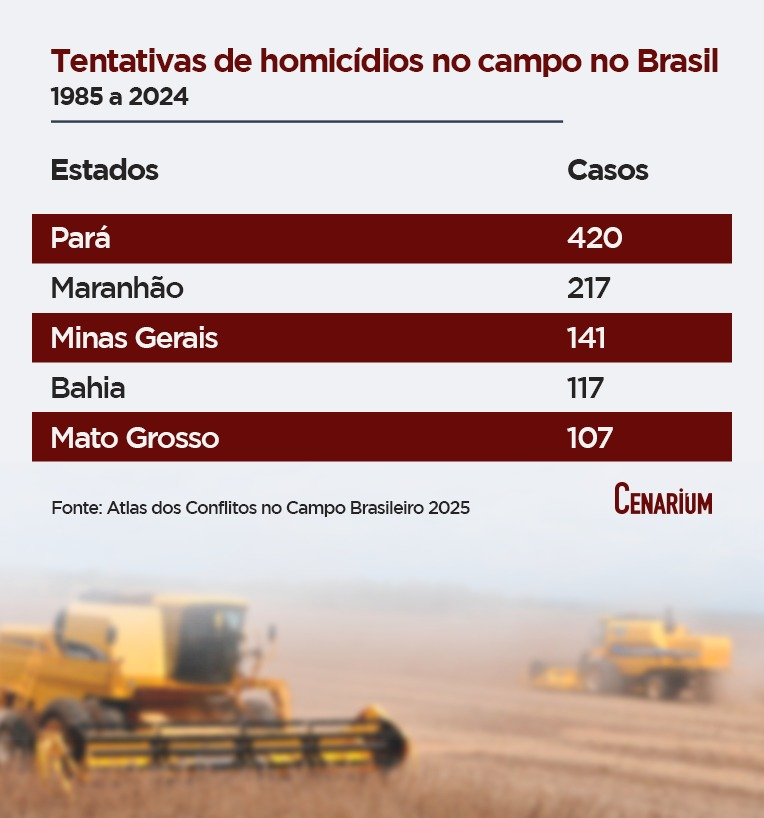COP30 host state leads Brazil in rural homicides and slave-like labor conditions
25 de July de 2025

By Fabyo Cruz – From Cenarium
BELÉM (PA) – With 612 murders, 420 attempted homicides, 1,597 death threats, and 1,478 cases of slave-like labor, the state of Pará stands out negatively with the highest rates of rural violence in Brazil. The data is from the 2025 Atlas of Conflicts in the Brazilian Countryside, released on Monday, July 21, by the Pastoral Land Commission (CPT), based on records collected between 1985 and 2023.

The report was launched during the 5th National CPT Congress, which runs until July 25 in São Luís, Maranhão. The document is the result of a joint effort by the Study, Research, and Extension Group in Agrarian Geography (GeoAgrária) of the Faculty of Teacher Education (FFP) at the State University of Rio de Janeiro (UERJ) and the Laboratory for the Study of Social Movements and Territorialities (Lemto) at Fluminense Federal University (UFF). The Atlas also received contributions from researchers at various universities across the country, in partnership with the CPT, and is based on data from the Dom Tomás Balduíno Documentation Center (Cedoc-CPT), founded in 1985.
Murders
In the Amazon region, 2,008 rural murders were recorded during the period, representing 66.8% of the national total. Of this percentage, Pará accounts for over 30%, ahead of Maranhão (201), Rondônia (178), Mato Grosso (152), and Bahia (147). Among Pará’s municipalities, Xinguara leads with 50 murders, followed by Marabá (42), Eldorado do Carajás (34), and São Félix do Xingu (34). Outside Pará, the only municipality with a high concentration of murders is Mucajaí, in Roraima, with 38 cases, driven by conflicts in the Yanomami Indigenous Territory (IT).

Attempted homicides
In attempted homicides, the Amazon remains in the lead, although with a lower share: 53.2% of the cases. Pará remains at the top with 420 cases, followed by Maranhão (217) and Minas Gerais (141). States like Bahia, Mato Grosso, Mato Grosso do Sul, Paraíba, Paraná, Pernambuco, and Rondônia also recorded relevant numbers.

Death threats
Death threats are overwhelmingly concentrated in the Amazon region, with 68.7% of cases, followed by the Northeast (18.8%) and the Central-South (12.5%). Pará again ranks first, with 1,597 recorded threats, followed by Maranhão (1,144), Amazonas (481), Bahia (371), and Mato Grosso (360). The municipalities of Marabá, São Félix do Xingu, and Conceição do Araguaia are among those with the most cases of this type of violence.
Land conflicts
The CPT defines land conflicts as “acts of resistance and confrontation over land possession, use, and ownership, as well as access to natural resources such as rubber, babassu, or Brazil nuts (ensuring the right to extractivism), involving squatters, settlers, quilombola communities, geraizeiros, Indigenous Peoples, small tenants, peasants, landless families, rubber tappers, traditional pasture users, babassu coconut breakers, nut harvesters, and others. Occupations, land takeovers, and encampments are also classified as land conflicts.”
Considering land conflict cases by state, Pará (4,961), Maranhão (4,033), Bahia (3,326), and Pernambuco (3,147) had the highest numbers, jointly representing 38% of all occurrences. The states of São Paulo and Paraná also show significant numbers (2,518 and 2,078, respectively).
At the municipal level, Marabá (Pará) with 438 conflicts and Rio Branco (Acre) with 432 stood out. Among the 16 municipalities with the next highest conflict rates, only two are outside the Amazon region: Mirante do Paranapanema (SP) and Dourados (MS). Of the remaining 14, six are in Pará (Xinguara, Altamira, São Félix do Xingu, Anapu, Conceição do Araguaia, Afuá), two in Rondônia (Vilhena and Porto Velho), two in Maranhão (Alcântara and Codó), and two in Amapá (Tartarugalzinho and Macapá). The others are Mucajaí (RR) and Acrelândia (AC).
Slave-like labor conditions
Beyond physical violence and threats, the Atlas identifies Pará as the state with the highest number of cases of labor in conditions analogous to slavery: 1,478 cases. Next are Maranhão (411), Minas Gerais (400), Mato Grosso (349), and Tocantins (336).
The document emphasizes that “combating slave labor in Brazil is directly tied to inspection efforts and the existence of effective public policies.” It also stresses that “CPT’s work remains essential in denouncing and bringing visibility to this serious human rights violation, which persists as a legacy of the colonial past and present-day exploitation.”

